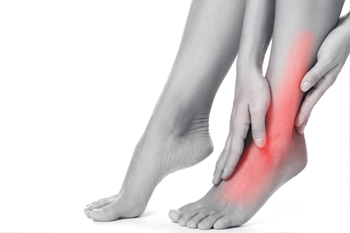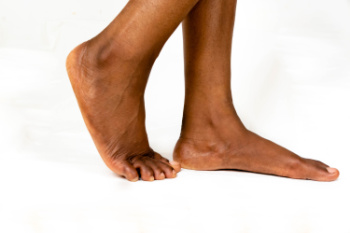Connect With Us
Blog

Selecting the right marathon running shoes is essential for performance and injury prevention. Comfort should be the top priority, as a well-fitting shoe reduces the risk of blisters and discomfort over long distances. Cushioned shoes provide excellent shock absorption, helping to reduce impact on the joints and muscles during extended runs. Runners who prefer a more responsive feel may benefit from carbon plate running shoes, which enhance propulsion and improve efficiency. Foot type, arch support, and running style should also be considered when choosing the best shoe. Trying on different styles and testing them with a short run can help determine the best fit. Investing in high-quality marathon shoes tailored to individual needs can improve endurance, reduce fatigue, and enhance overall performance on race day. Foot conditions can develop as a result of wearing the wrong running shoes. If this applies to you, it is suggested that you contact a podiatrist who can treat various foot ailments, and guide you on what the best type of running shoe is for you.
If you are a runner, wearing the right running shoe is essential. For more information, contact Nadia Sadeghi, DPM from Lincoln Park Foot and Ankle Specialists. Our doctor can provide the care you need to keep you pain-free and on your feet.
Choosing the Right Running Shoe for Your Foot Type
To increase performance and avoid the risk of injury, it is important to choose the right running shoe based on your foot type. The general design of running shoes revolves around pronation, which is how the ankle rolls from outside to inside when the foot strikes the ground.
- Neutral runners are able to choose from a wide variety of shoes, including minimalist shoes or even going barefoot.
- Runners who overpronate, or experience an over-abundance of ankle rolling, should choose shoes that provide extra motion control and stability.
- Runners who underpronate, or supinate, have feet that have high arches and lack flexibility, preventing shock absorption. They require shoes with more flexibility and cushion.
If you have any questions please feel free to contact our office located in Chicago, IL . We offer the newest diagnostic and treatment technologies for all your foot and ankle needs.

Pain on the side of the foot, known as lateral foot pain, can make simply walking or standing difficult. Causes of lateral foot pain include stress fractures, cuboid syndrome, peroneal tendonitis, arthritis, a twisted ankle, and tarsal coalition. Stress fractures develop from repetitive impact, cuboid syndrome occurs when the cuboid bone is injured or dislocated, and peroneal tendonitis results from inflammation of the tendons along the outer ankle. Arthritis can cause joint pain and stiffness, and a twisted ankle may stretch or tear ligaments. Tarsal coalition, which is a congenital condition, can lead to foot pain and limited mobility. Symptoms include sharp or aching pain, swelling, bruising, and difficulty bearing weight. Depending on the cause, a podiatrist may recommend rest, immobilization, custom orthotics, or in some cases, surgery, to relieve pain and restore foot function. Ignoring persistent foot pain can lead to further complications, so early evaluation is important. If you have pain on the side of your foot, it is suggested that you schedule an appointment with a podiatrist for an exam, diagnosis, and treatment.
Foot Pain
Foot pain can be extremely painful and debilitating. If you have a foot pain, consult with Nadia Sadeghi, DPM from Lincoln Park Foot and Ankle Specialists. Our doctor will assess your condition and provide you with quality foot and ankle treatment.
Causes
Foot pain is a very broad condition that could be caused by one or more ailments. The most common include:
- Bunions
- Hammertoes
- Plantar Fasciitis
- Bone Spurs
- Corns
- Tarsal Tunnel Syndrome
- Ingrown Toenails
- Arthritis (such as Gout, Rheumatoid, and Osteoarthritis)
- Flat Feet
- Injury (from stress fractures, broken toe, foot, ankle, Achilles tendon ruptures, and sprains)
- And more
Diagnosis
To figure out the cause of foot pain, podiatrists utilize several different methods. This can range from simple visual inspections and sensation tests to X-rays and MRI scans. Prior medical history, family medical history, and any recent physical traumatic events will all be taken into consideration for a proper diagnosis.
Treatment
Treatment depends upon the cause of the foot pain. Whether it is resting, staying off the foot, or having surgery; podiatrists have a number of treatment options available for foot pain.
If you have any questions, please feel free to contact our office located in Chicago, IL . We offer the newest diagnostic and treatment technologies for all your foot care needs.

Flat feet often get a bad reputation, but having low or no arches is not necessarily a medical issue. Many people with flat feet experience no pain, move just fine, and never need treatment. In fact, arches vary widely. Some people have naturally lower arches, and that is perfectly normal. One common myth is that flat feet always cause pain or lead to joint problems. While some people may develop discomfort due to wearing improper footwear or overuse, many with flat feet live pain-free. Another myth is that everyone with flat feet needs orthotics. In reality, treatment is only needed if symptoms arise, such as pain, fatigue, or instability. However, if you have painful flat feet, and it is affecting your mobility, it is suggested that you see a podiatrist for intervention.
Flatfoot is a condition many people suffer from. If you have flat feet, contact Nadia Sadeghi, DPM from Lincoln Park Foot and Ankle Specialists. Our doctor will treat your foot and ankle needs.
What Are Flat Feet?
Flatfoot is a condition in which the arch of the foot is depressed and the sole of the foot is almost completely in contact with the ground. About 20-30% of the population generally has flat feet because their arches never formed during growth.
Conditions & Problems:
Having flat feet makes it difficult to run or walk because of the stress placed on the ankles.
Alignment – The general alignment of your legs can be disrupted, because the ankles move inward which can cause major discomfort.
Knees – If you have complications with your knees, flat feet can be a contributor to arthritis in that area.
Symptoms
- Pain around the heel or arch area
- Trouble standing on the tip toe
- Swelling around the inside of the ankle
- Flat look to one or both feet
- Having your shoes feel uneven when worn
Treatment
If you are experiencing pain and stress on the foot you may weaken the posterior tibial tendon, which runs around the inside of the ankle.
If you have any questions please feel free to contact our office located in Chicago, IL . We offer the newest diagnostic and treatment technologies for all your foot and ankle needs.

